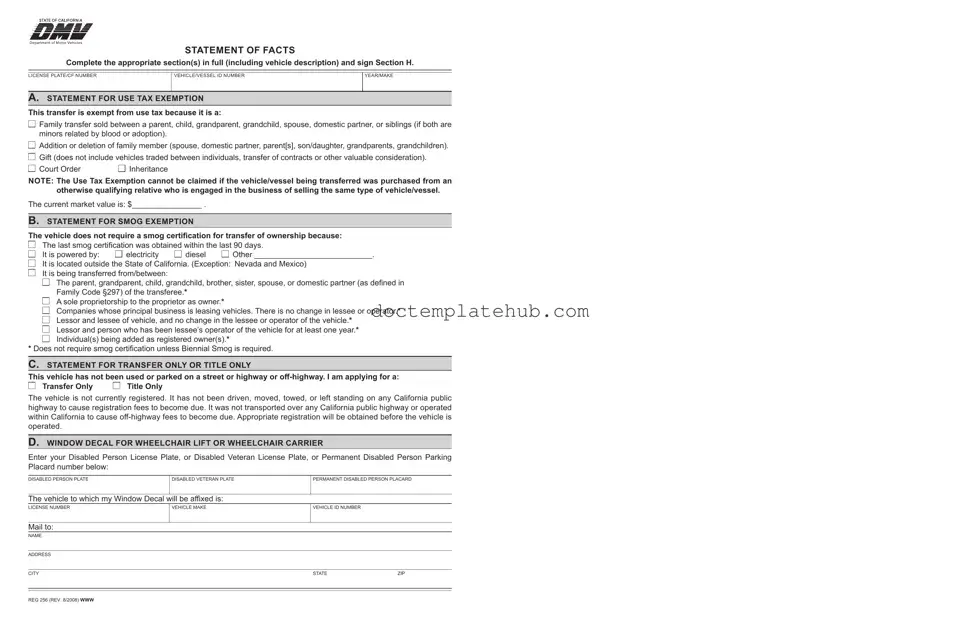The DMV Reg 256 form, also known as the Statement of Facts, is primarily used in California for various vehicle-related transactions. It allows individuals to declare specific circumstances regarding vehicle transfers, such as exemptions from use tax or smog certification. This form is essential for ensuring that the transfer of ownership complies with state regulations.
What are the use tax exemptions listed on the form?
The DMV Reg 256 form outlines several scenarios that qualify for use tax exemption. These include family transfers between relatives such as parents, children, and siblings, as well as gifts, court orders, and inheritances. It's crucial to note that if the vehicle was purchased from a relative who is in the business of selling vehicles, this exemption cannot be claimed.
How do I claim a smog exemption using this form?
To claim a smog exemption, you must indicate the appropriate reason on the DMV Reg 256 form. Valid reasons include having a recent smog certification, owning a vehicle powered by electricity or diesel, or transferring ownership between family members. If the vehicle is located outside California, that may also qualify for an exemption, with some exceptions.
What if I only want to transfer the title, not the registration?
If you wish to transfer only the title of the vehicle, you can indicate this on the form by selecting the "Title Only" option. This is applicable if the vehicle is not currently registered and has not been driven or parked on public highways. Be sure to complete the necessary sections and provide accurate vehicle details.
What information is required for the vehicle body change section?
If you have made changes to the vehicle body, you need to provide details such as the current market value, the cost of changes, and the specific alterations made. This could include changes to the unladen weight, motive power, body type, or number of axles. Accurate reporting helps ensure compliance and proper registration.
How do I correct a misspelled name on the DMV Reg 256 form?
If your name is misspelled, you can correct it directly on the form. There is a designated section where you can specify the correct spelling. It's important to ensure that all names are accurate to avoid issues with vehicle registration and ownership records.
What happens if I don’t sign the DMV Reg 256 form?
Failing to sign the DMV Reg 256 form can lead to delays or rejection of your application. The signature is a declaration that the information provided is true and correct. Always remember to sign and date the form to validate your submission.
Where should I send the completed DMV Reg 256 form?
Once you have completed the DMV Reg 256 form, you should mail it to the address specified on the form. Ensure that all required sections are filled out and that you have included any additional documentation, if necessary. This will help facilitate a smooth processing of your vehicle transfer.
